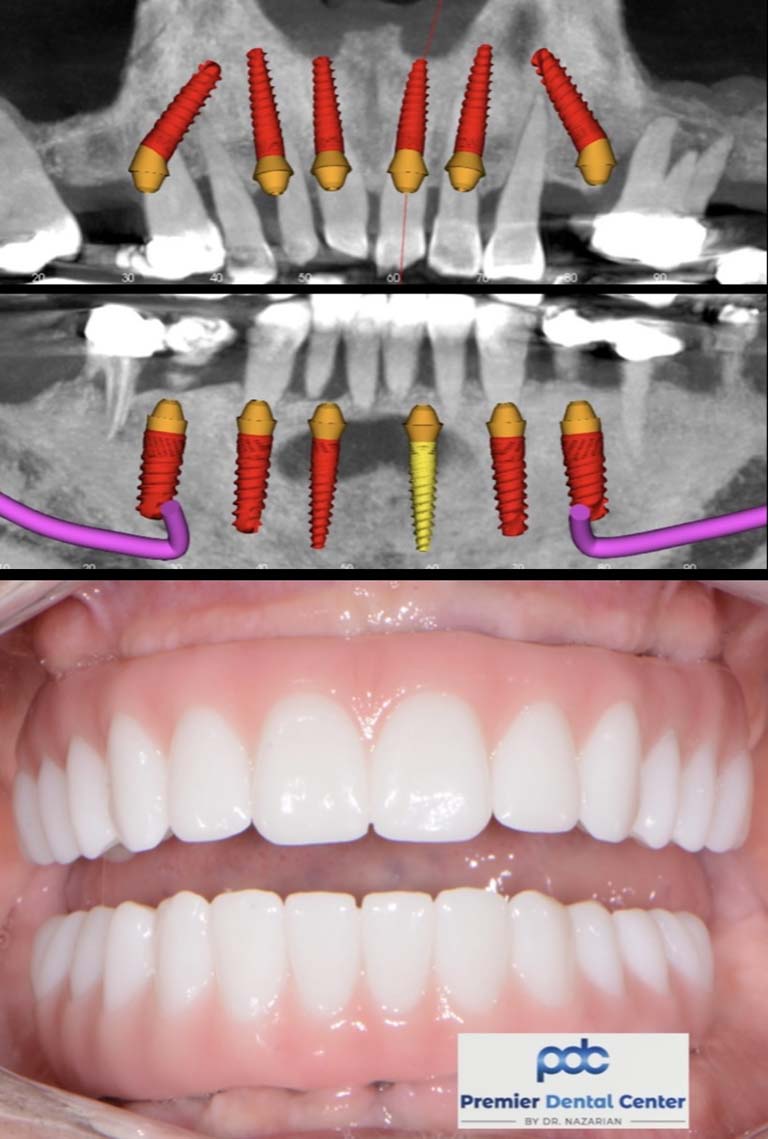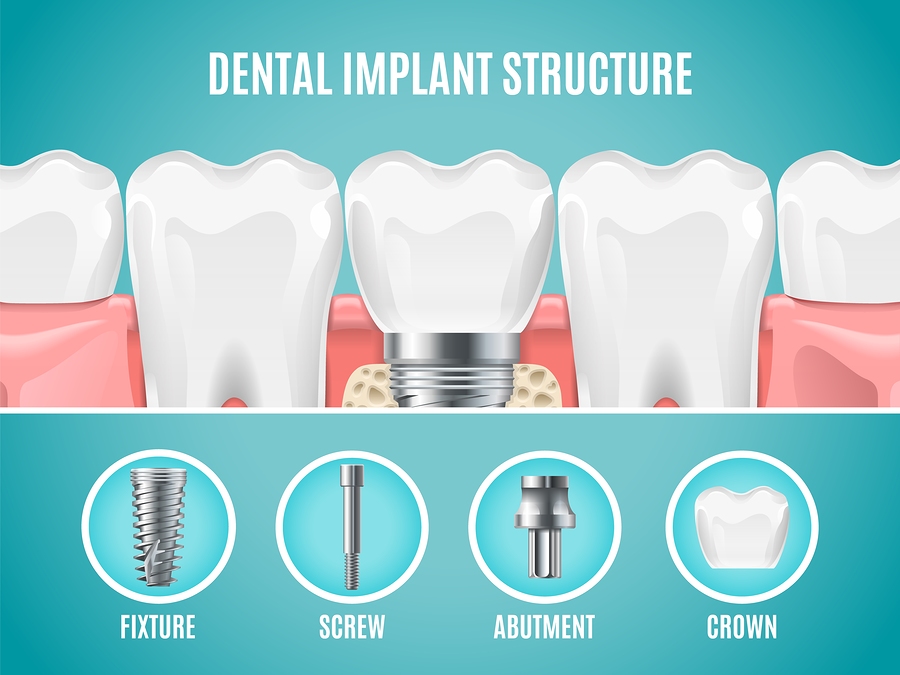Unknown Facts About Dental Sense
Unknown Facts About Dental Sense
Blog Article
The Ultimate Guide To Dental Sense
Table of ContentsThe 15-Second Trick For Dental SenseDental Sense Can Be Fun For EveryoneAll about Dental SenseNot known Facts About Dental Sense
are clinical devices surgically dental implanted into the jaw to bring back a person's capability to eat or their look. They provide support for synthetic (phony) teeth, such as crowns, bridges, or dentures. When a tooth is lost due to injury or condition, a person can experience complications such as fast bone loss, faulty speech, or modifications to eating patterns that result in pain.Dental implant systems are composed of an oral implant body and dental implant joint and may additionally include an abutment fixation screw. Dental veneers cost. The dental implant body is surgically inserted in the jawbone in location of the tooth's root. The dental implant abutment is generally connected to the implant body by the abutment fixation screw and expands via gum tissues right into the mouth to support the attached fabricated teeth
(https://www.ted.com/profiles/48604569/about)Structure of The Oral Implant System choosing dental implants, speak to your oral copyright regarding the potential benefits and threats, and whether you are a candidate for the treatment. Things to take into consideration: Your overall wellness is an essential factor in identifying whether you are a great candidate for oral implants, how much time it will take to recover, and how much time the dental implant might remain in area.
Smoking cigarettes may influence the recovery procedure and decrease the lasting success of the implant. The recovery process for the dental implant body might take a number of months or longer, during which time you usually have a short-term abutment instead of the tooth. the dental implant treatment: Meticulously follow the dental hygiene guidelines offered to you by your oral supplier.
More About Dental Sense
Implant failure can result in the need for one more procedure to repair or replace the implant system. Recovers the capacity to chew Brings back aesthetic appearance Helps keep the jawbone from shrinking due to bone loss Preserves the wellness of the bordering bone and periodontals Assists maintain adjacent (neighboring) teeth secure Improves high quality of life Damage to bordering natural teeth during implant placement Injury to the surrounding tissues during surgical treatment, such as sinus perforation Injury during surgical procedure (for instance, crack of surrounding jawbone) Insufficient feature, such as seeming like the teeth do not attack together normally A feeling that the tooth is loose or turning in place resulting from an abutment screw loosening up Implant body failure (looseness of the implant body) because of systemic infection, which may be more probable in people with unchecked diabetes because of neighborhood infection in bone and periodontals sustaining the implant body because of postponed recovery, which may be most likely in individuals that smoke Problem cleaning the gums around the dental implant, leading to inadequate dental hygiene Untreated gum illness Post-surgical tingling because of nerve impingement or damage Always notify health care carriers and imaging professionals that you have oral implants before any magnetic vibration imaging (MRI) or x-ray treatments.
FDA is not familiar with any damaging occasions reported for MRI or x-ray treatments with oral implants. Dental implants systems are usually made of materials that comply with global agreement standards of the International Organization for Standardization (ISO) or ASTM International. These standards have details of what makes a risk-free material.

An oral implant is a framework that replaces a missing out on tooth. With screw-like tools, the specialist inserts an implant into the jawbone, and it functions as an anchor for a man-made tooth, called a crown. A tool called a joint attaches the man-made tooth to the oral implant. The crown is personalized to fit the person's mouth and match the shade of their teeth.
Our Dental Sense Statements
Some people are not eligible for dental implant surgical treatment. It is for dental specialists to operate individuals with: intense illnessuncontrollable metabolic diseasebone or soft cells illness or infectionIf these problems are dealt with, a person can have the surgical procedure. In, oral cosmetic surgeons avoid running on people with: If people with any one of the above undergo dental implant surgical procedure, there is a greater danger of the dental implant stopping working.

Oral dental implant surgical treatment is a customized process. It's not the very same for everybody. The complying with provides a basic overview of what you can anticipate your dental expert, dental surgeon, periodontist or prosthodontist to do: Put the implant operatively. Provide you time to recover. Connect the article and last crown, bridge or denture.
Next off, your specialist will thoroughly position the oral implant right into your jaw. If your dental implant is near the front of your mouth, your dental professional will make a momentary tooth for you to use till you recover.
Things about Dental Sense
Your company can inform you what to expect in your circumstance. During the recovery phase, your jawbone needs to fuse to the dental implant. This process, called osseointegration, is vital for stability and lasting success. This procedure can take anywhere from 3 to nine months. In some discover this situations, it might take longer.
Once your implant heals, your dental professional can attach the joint (tiny connector message) and your last remediation (crown, bridge or denture). This normally takes regarding one hour to finish and might call for a 2nd small surgery. You should not really feel any type of pain throughout your oral implant procedure due to the fact that your supplier will make use of medication to numb your periodontals.
Report this page